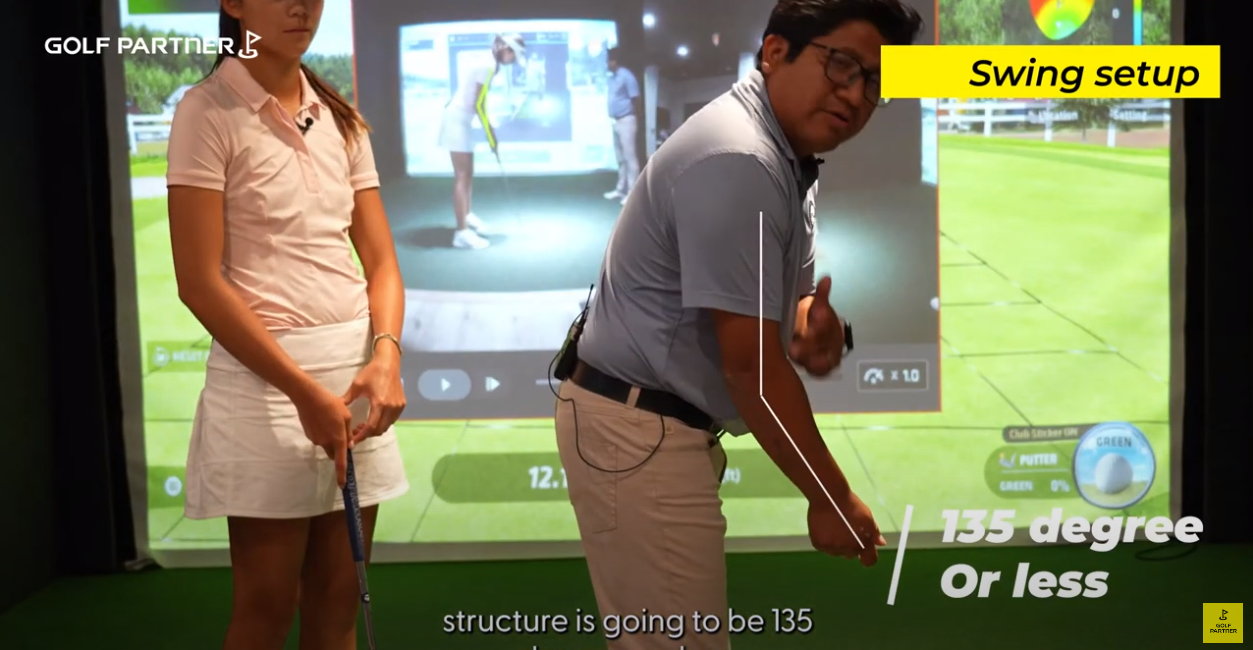The Importance of Putting
Before we dive into the details of putting, let's emphasize just how crucial it is in the grand scheme of golf. As many of you know, golf is a sport that demands precision and consistency, and putting is often the most pivotal element in achieving low scores. It doesn't matter how powerful your drives are or how accurate your iron shots if you can't putt efficiently.
We've brought in a talented golfer named Nikki to illustrate the importance of putting. Nikki's strength lies in her ball striking, which is nothing short of impressive. Her iron play and driving skills are top-notch, but like many golfers, she has room for improvement in the putting department.
The Setup: The Foundation of Great Putting
One common mistake golfers make is not paying enough attention to their putting setup. While we often scour Instagram and YouTube for full swing tips, we tend to neglect the nuances of the flat stick. Today, we're going to focus on helping Nikki, and all of you, get your putting setup right for more consistent and successful putting.
The Right Arm Angle
The first parameter we'll address is the angle of the right arm for right-handed putters. In our studies, we've found that the right arm structure of successful putters like Tiger Woods and Rory McIlroy is typically 135 degrees or less. This angle allows them to use their shoulders effectively in the putting stroke, rather than relying solely on their hands. In contrast, golfers with a handicap of 10 or more often have a right arm angle of 151 degrees or more, leading to less control over their putter.
Nikki, with her natural talent, already has a solid right arm structure. It's crucial to maintain or develop this angle to improve putting consistency.
The Spine Angle
Another essential aspect of the setup is the spine angle. We've found that a spine angle ranging from 113 to 123 degrees is optimal for putting. This angle promotes better shoulder usage, which is vital for a stable and accurate putting stroke. Nikki measures at 137 degrees, which is a good starting point.
Fine-Tuning the Setup
To further refine the setup, we incorporate a subtle adjustment to the pelvis position. By moving the pelvis back slightly during setup, you can stabilize the lower body and prevent excessive movement during the stroke. This simple tweak, combined with the right arm angle and spine angle, can make a significant difference in your putting game. One way to also improve your setup is to pull the putter out in front of your chest and slowly bring it towards you and form a 90 degree angle with the right arm and then tilt, which results in a much better posture that creates an optimal spine angle, which in turn promotes better usage of the shoulders.
Understanding Your Putter
As you progress on your golf journey, it's crucial to understand the tool in your hands—the putter. Unlike a straight-up-and-down shaft, putters have an angled design. This angle is essential for allowing the putter head to follow a natural arc during the stroke, in line with the body's biomechanics.
Trying to force a straight back-and-through motion with a slanted shaft can lead to an inconsistent and inaccurate putting stroke. Instead, embrace the natural arc that the putter is designed for. Maintain good posture, relax your shoulders, and let the putter follow its natural path.
Conclusion
In golf, mastering putting is often the key to unlocking your true potential on the course. The setup and technique are the building blocks of a successful putting game. By paying attention to details like right arm angle, spine angle, and the natural arc of your putter, you can make significant strides in your putting consistency.Remember, even if you have a powerful drive and pinpoint iron shots, a shaky putting game can undermine your efforts. So, take the time to practice your putting setup and technique, and who knows, maybe one day you'll be holding up a trophy at a major championship, just like Nikki and countless other talented golfers.
Keep working on your game, and thank you for joining us on this journey to improve your putting skills. Happy golfing!








